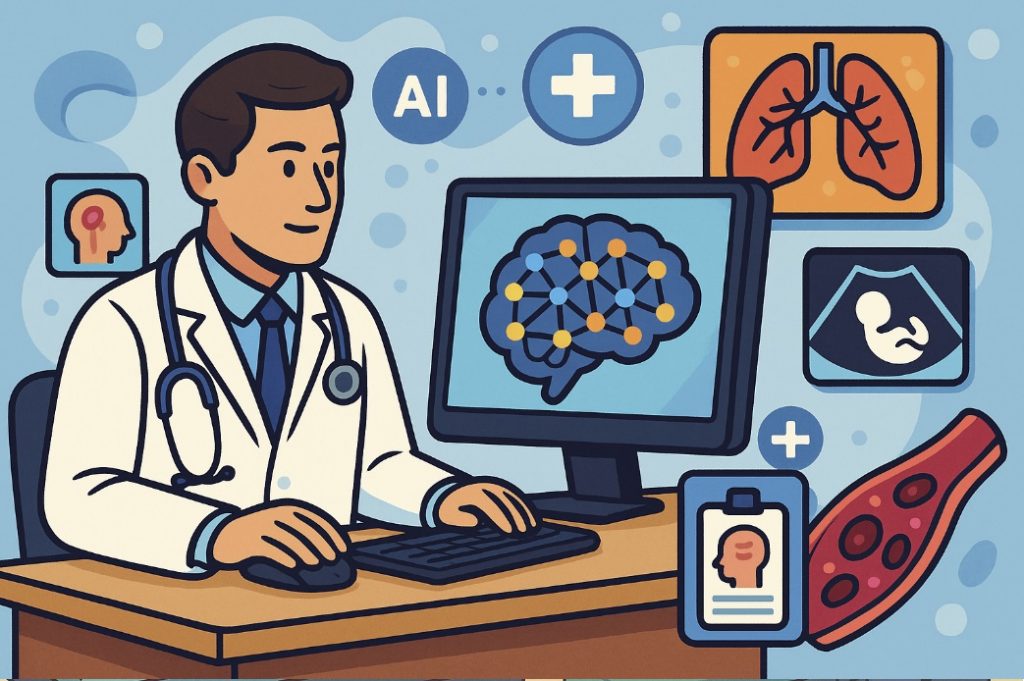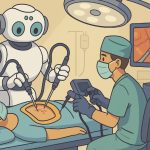In recent years, neural networks—a type of artificial intelligence modeled after the human brain—have revolutionized the field of medical diagnostics. With the ability to process vast amounts of data, identify patterns, and learn from experience, these systems are becoming vital tools in detecting diseases faster, more accurately, and often earlier than traditional methods allow.
What Are Neural Networks?
Neural networks are algorithms inspired by the structure of the brain. They consist of interconnected “neurons” arranged in layers that process information in stages. Trained on large datasets, they can recognize complex patterns and make decisions—perfect for tasks like analyzing medical images or interpreting test results.
How Neural Networks Are Used in Diagnostics
1. Medical Imaging Analysis
Neural networks can examine scans such as:
- X-rays
- MRIs
- CT scans
- Ultrasounds
They detect abnormalities like tumors, fractures, or lesions with incredible accuracy—sometimes outperforming radiologists in identifying early signs of diseases like lung cancer, breast cancer, and stroke.
2. Pathology Slide Interpretation
AI can analyze digital images of tissue samples, identifying cancerous cells, counting immune cells, and spotting microscopic patterns that indicate disease progression.
3. Predictive Diagnostics
By analyzing patient histories, lab results, and genetic data, neural networks can:
- Predict the risk of chronic illnesses such as diabetes, heart disease, or kidney failure
- Forecast complications after surgery or during treatment
4. Dermatology and Ophthalmology
Neural networks power apps and diagnostic tools that can:
- Assess skin lesions for signs of melanoma
- Diagnose diabetic retinopathy by analyzing retina scans
5. Voice, Breath, and Behavioral Analysis
AI is also exploring unconventional methods like:
- Detecting Parkinson’s disease through voice changes
- Analyzing breathing patterns to identify sleep apnea
- Monitoring behavior and facial expressions for early signs of depression or Alzheimer’s disease
Advantages of Neural Network Diagnostics
- Speed: Instant analysis of complex data
- Accuracy: Reduced human error in repetitive tasks
- Consistency: Same standard across different patients and settings
- Scalability: Can serve areas with limited access to specialists
Risks and Challenges
- Data bias: Poorly balanced training data may lead to unequal diagnostic accuracy
- Transparency: Neural networks often operate as “black boxes,” making it hard to explain how they reach conclusions
- Regulation: Many AI tools still require extensive validation before clinical use
- Privacy: Patient data must be securely handled to prevent misuse
Glossary
- Neural network – _A machine learning model inspired by the human brain, capable of recognizing patterns in data.*
- MRI (Magnetic Resonance Imaging) – _A type of scan using magnetic fields to produce detailed images of internal organs.*
- Pathology – _The study and diagnosis of disease through examination of tissues, organs, or bodily fluids.*
- Black box – _A system whose internal workings are not transparent or understandable, even if the results are accurate.*
Conclusion
Neural networks are not just futuristic tools—they’re already transforming diagnostics in hospitals, labs, and even mobile apps. As the technology matures, it holds the promise of making healthcare more accessible, precise, and preventive—helping detect illnesses before they become life-threatening. We have to be very carefull working with neural networks using them as tool but not as the doctor…


